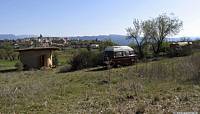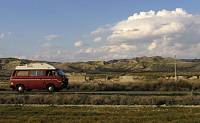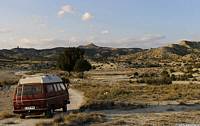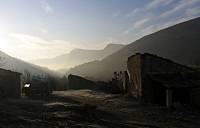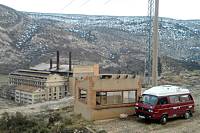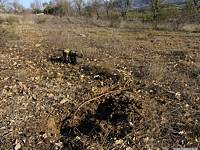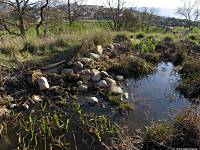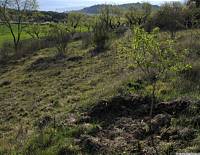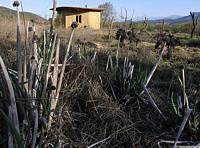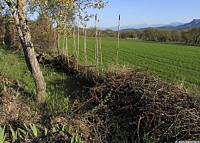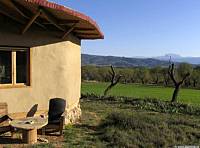|
|
Nature Switched On
|
|
|
introduction |
2012 March 17 to 31
The Volkswagen has of course not a direct
relationship with the Nature Switched On process and I am not going
to write extensively about our trips. I bought it as an ideal means
of transport and housing for our photo 'safari' travels around
Spain, visiting
|
|
|
The new house on wheels,
doubling its function as a guest house. 31 Mar 12:09 |
||
|
The Volkswagen T3 in the steppe area of Monegros, near Zaragoza. 17 Mar 18:00 |
||
|
Monegros, Zaragoza. 17 Mar 18:16 |
||
|
Near our beloved power
station in Teruel. |
Early morning in Teruel. 24 Mar 8:37 |
|
|
In our zone we will have to consider another regular management
method, besides haymaking: ground leveling.
|
||
| The
beasts did not only dig but also tore complete plants out of the
soil, in this case the beautiful Cistus albidus. 31 Mar 10:25 |
||
|
The new development plan (but
not mine) for the upper pond: a mud pool for swine. 31 Mar 10:10 |
||
| Planting
of new shrubs is now quite difficult, as the protecting straw layer
is systematically displaced. This young almond tree seems to hold on. 31 Mar 10:11 |
||
|
New green Welsh onion shoots (Allium fistulosum) are
appearing among the old ones in the vegetable garden. |
A possible explanation for the rejection of the vegetable garden by the wild swine might be human urine. All the fruit tree around the house and vegetable garden are surrounded by a thick layer of hay and straw and receive the regular watering of (male) urine. It is known that a small canal dug around a tent in the jungle and filled with human urine deters wild animals. |
|
|
|
|
|
Nevertheless my plan is to protect the vegetable garden more thoroughly and I started to erect another wall of branches on the, still open, north-east side of the garden. I used the enormous quantity of wood that came from the pruning of three almond trees near the house. As commented last November, these trees were developing too long and heavy branches, and I decided to prune them considerably. The result is quite dramatic but it's only a matter of time and these trees will give the area some intimacy again. The pruning resulted in enough firewood for another winter and the smaller branches will suffice for a wall of six meters long, more than one meter high and 40cm wide. Farmers in the region usually get rid of the branches by burning, but the beneficial ecological effects of branch-walls are well-known, offering shelter and shade for wild life. |
||
|
The recently pruned Almond trees look like runes.
|
Branch wall in construction. I use bamboo poles to erect the wall. I suppose the width of 40 cm is enough to withstand the wind. 31 Mar 9:57 |
|
|
introduction
|
|
